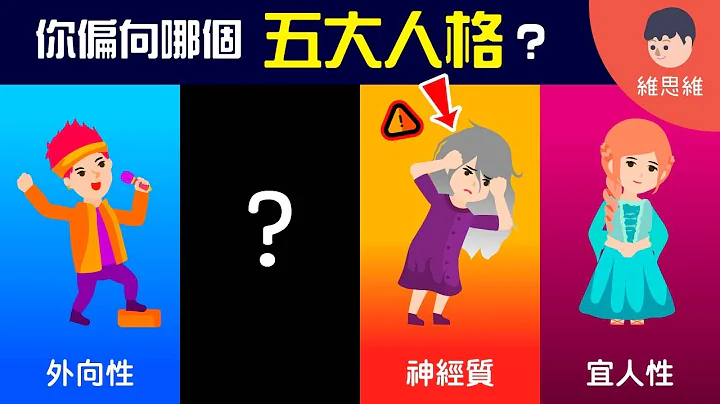Variables 變量
Independent variable (IV): Variable the experimenter manipulates - assumed to have a direct effect on the dependent variable.
Dependent variable (DV): Variable the experimenter measures, after making changes to the IV which are assumed to affect the DV.
Extraneous variables (Ex Vs): Other variables, apart from the IV, that might affect the DV. They might be important enough to provide alternative explanations for the effects, for example, confounding variables.
獨立變量(IV):實驗者操縱的變量--假定對因變量有直接影響。
被動變量(DV):實驗者測量的變量,在對IV進行改變後,假定會影響DV。
外在變量(Ex Vs):除了IV之外,可能影響DV的其他變量。它們可能很重要,足以為效果提供其他解釋,例如,混雜變量。

Types of experiments 實驗的類型
Laboratory experiment: Artificial environment with tight controls over variables.
Field experiment: Natural environment with Independent variable manipulated by researchers.
Natural experiment: Natural changes in independent variable are used - it is not manipulated.
實驗室實驗:人工環境,對變量進行嚴格控制。
現場實驗:自然環境,由研究人員操縱獨立變量。
自然實驗:使用自變量的自然變化--它沒有被操縱。
Note: In a true experiment participants are randomly allocated to groups.
注意:在真正的實驗中,參與者被隨機分配到各組。
Strengths and weaknesses of experimental methods 實驗方法的優勢和劣勢
Laboratory experiments 實驗室實驗
Strengths 優勢: | Weaknesses 弱點: |
Tighter control of variables. Easier to comment on cause and effect. 對變量的控制更嚴密。更容易對因果關係進行評論。 | demand characteristics - participants aware of experiment, may change behaviour. 需求特徵--參與者意識到實驗,可能會改變行為。 |
Relatively easy to replicate. 相對容易複製。 | Artificial environment - low realism. 人工環境--現實性低。 |
Enable use of complex equipment. 能夠使用複雜的設備。 | May have low ecological validity - difficult to generalise to other situations. 可能具有較低的生態有效性--難以推廣到其他情況。 |
Often cheaper and less time-consuming than other methods. 通常比其他方法更便宜、更省時。 | Experimenter effects - bias when experimenter's expectations affect behaviour. 實驗者效應--當實驗者的期望影響行為時,會產生偏差。 |

Field experiments 現場實驗
A field experiment takes place anywhere in a natural setting; it could take place in a school, hospital, the street or an office. 現場實驗在自然環境中的任何地方進行;它可以在學校、醫院、街道或辦公室進行。
Note 注意:
A field experiment is an experiment; the independent variable is manipulated. Not all field studies are experiments.
實地實驗是一種實驗;自變量是被操縱的。不是所有的實地研究都是實驗。
Strengths 優勢: | Weaknesses 弱點: |
People may behave More naturally than in laboratory - higher realism. 人們的行為可能比在實驗室里更自然--更真實。 | Often only weak control of extraneous variables - difficult to replicate. 通常只對不相干的變量進行薄弱的控制--難以複製。 |
Easier to generalise from results. 更容易從結果中歸納。 | Can be time-consuming and costly. 可能很費時間和成本。 |
Natural experiments 自然實驗
Strengths 優勢: | Weaknesses 弱點: |
Situations in which it would be ethically unacceptable to manipulate the independent variable. 操縱自變量在倫理上是不可接受的情況。 | The independent variable is not controlled by the experimenter. 自變量不受實驗者的控制。 |
Less chance of demand characteristics or experimenter bias interfering. 需求特徵或實驗者偏見干擾的機會較少。 | No control over the allocation of participants to groups (random in a 'true experiment'). 對參與者的分組沒有控制("真正的實驗 "中的隨機)。 |
Experimental design 實驗設計
Three experimental designs are commonly used 通常使用三種實驗設計:
Independent groups: Testing separate groups of people, each group is tested in a different condition.
Repeated measures: Testing the same group of people in different conditions, the same people are used repeatedly.
Matched pairs: Testing separate groups of people - each member of one group is same age, sex, or social background as a member of the other group.
In each case, there are one or more experimental groups, where the independent variable has changed and a control group where the independent variable has not changed.
獨立組:測試不同的人群,每組在不同的條件下進行測試。
反覆測量:在不同條件下測試同一組人,重複使用相同的人。
匹配的一對:測試不同的人群--一個組的每個成員與另一個組的成員具有相同的年齡、性別或社會背景。
在每一種情況下,都有一個或多個實驗組,其中自變量已經改變,還有一個對照組,其中自變量沒有改變。

Advantages and disadvantages for each experimental design 每個實驗設計的優勢和劣勢
Independent groups 獨立組:
Avoids order effects. If a person is involved in several tests they man become bored, tired and fed up by the time they come to the second test, or becoming wise to the requirements of the experiment!
More people are needed than with the repeated measures design.
Differences between participants in the groups may affect results, for example; variations in age, sex or social background. These differences are known as participant variables.
避免了順序效應。如果一個人參與了幾次測試,那麼當他們到了第二次測試時,他們就會感到厭煩、疲憊和厭倦,或者對實驗的要求變得明智!這就是獨立組的好處。
與重複測量設計相比,需要更多的人。
各組參與者之間的差異可能會影響結果,例如,年齡、性別或社會背景的變化。這些差異被稱為參與者變量。
Repeated measures 反覆測量:
Avoids the problem of participant variables.
Fewer people are needed.
Order effects are more likely to occur.
避免了參與者變量的問題。
需要的人數較少。
順序效應更有可能發生。
Matched pairs 匹配的一對:
Reduces participant variables.
Avoids order effects.
Very time-consuming trying to find closely matched pairs.
Impossible to match people exactly, unless identical twins!
減少了參與者的變數。
避免了順序效應。
試圖找到密切匹配的配對非常耗費時間。
除非是同卵雙胞胎,否則不可能完全匹配!
Note 注意:
Counterbalancing: Alternating the order in which participants perform in different conditions of an experiment. For example, group 1 does 'A' then 'B', group 2 does 'B' then 'A' this is to eliminate order effects.
Randomisation: Material for each condition in an experiment is presented in a random order, this is also to prevent order effects.
平衡法:在實驗的不同條件下,交替執行參與者的順序。例如,第一組先做 "A "再做 "B",第二組先做 "B "再做 "A",這是為了消除順序效應。
隨機化:實驗中每個條件的材料都是以隨機順序呈現的,這也是為了防止順序效應。





















